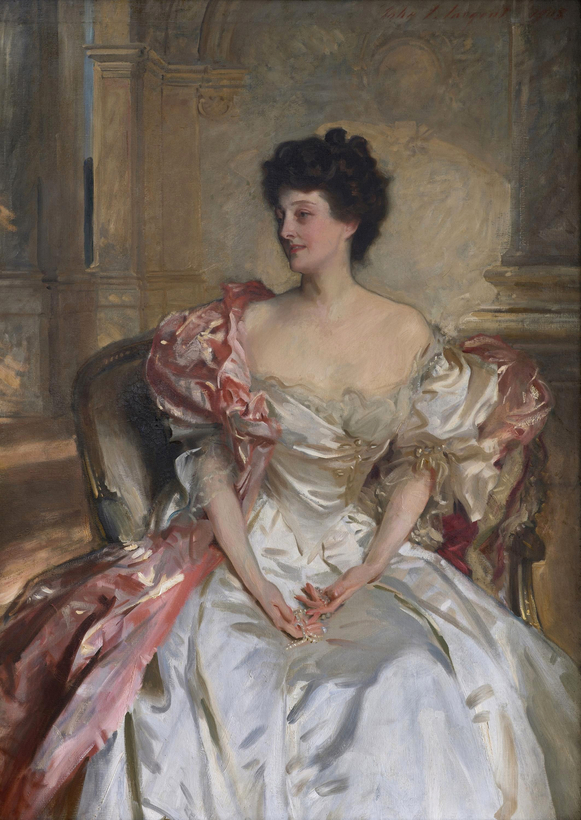“In spite of my democracy / I’ve married the aristocracy / Like a true American girl.” This isn’t a line trilled in the television show Downton Abbey, but it could have been.
It’s from a song by George Grossmith, the comedian, composer, and writer (The Diary of a Nobody), whose sketch shows toured England and the U.S. at the turn of the 20th century, skewering the antics of the transatlantic upper classes.
Emerging in the 1890s from his show How I Discovered America, Grossmith’s “The American Girl” popularized the “dollar princess,” that sudden phenomenon of wealthy American heiresses obtaining old-world social status by marrying into the (mostly British) hereditary aristocracy. Grossmith later wrote the lyrics for The Dollar Princess, a hit Broadway musical of 1909, a year that also saw the publication of Emily Post’s novel The Title Market.
One man, though, did more than anyone to fix the idea of the dollar princess in the popular imagination: the painter John Singer Sargent, who was never slow to spot an opening in the market. Sargent’s pictures of the Countess of Suffolk (also known as Daisy Leiter), Nancy Astor (formerly Nancy Witcher Langhorne), and the Duchess of Marlborough (born Consuelo Vanderbilt) are justly renowned examples of his high-style portraiture. Indeed, sitting for—and paying for—a portrait by Sargent was a mark of social clout in itself, like appearing in the Court Circular or a newspaper’s society pages.

The exhibition “Heiress: Sargent’s American Portraits,” a choice selection of eight oil paintings and 10 charcoals, opened yesterday at Kenwood House, a 17th-century mansion perched on the edge of Hampstead Heath, in the northern suburbs of London. At one point Kenwood had its own dollar princess, Nancy Leeds, who lived there between 1917 and 1920. Once of Zanesville, Ohio, she married a Greek prince and became Princess Anastasia of Greece and Denmark.
In truth, Sargent’s dollar-princess pictures—a sliver of the profusion of portraiture he turned out during the Belle Époque—have been somewhat overshadowed by his more “British” subjects, such as Gertrude Agnew, Ena and Betty Wertheimer, and the Wyndham sisters. But they are revelatory all the same. These women were the reality-TV stars of their day, their every move stalked by gossip columnists. Back home in America, they were castigated for removing an estimated $200 million from the U.S. economy in dowries and cash settlements.

Squint a little, and these amazingly poised and polished individuals come to life. Astor, known for her waspish wit, would become the second female M.P. but the first to actually take her seat in the House of Commons. Adele Grant was an activist vegetarian and one of the “Lovely Five” beauties of the day. Gracie Hinds sat for Sargent’s last portrait a month before his death, in 1925. Money may not buy you happiness, but it does buy you immortality of a kind.
“Heiress: Sargent’s American Portraits” will be on view at Kenwood House, in London, from May 16 to October 5
Andrew Pulver writes about film for The Guardian and about art for The Art Newspaper. He lives in Oxford

